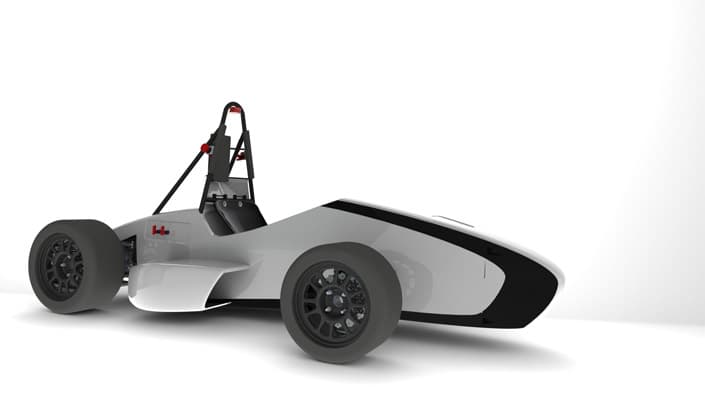It’s not new that engineers of Indian origin create solar-powered vehicles. Previously, an Australian engineer born in India named Naveen Rabelli has travelled 6,200 miles in 7 months with his customized solar tuktuk or rickshaw. Now, a new set of engineers – 25 of them in one team – has developed a solar-powered vehicle that is set to take the world by storm.
The 25 young mechanical engineering students hail from Jodhpur Institute of Engineering & Technology in the northern Indian state of Rajasthan. They are led by Captain Kanishk Varshney and Vice-Captain Aman Sachdeva, and advised by faculty Mr. Rakesh Narawat, Mr. Mohit Ostwal, and Mrs. Kusum Agarwal.

Source: Suryoday’s Facebook Page
Creating the solar-powered vehicle was born out of a challenge. The team joined the Asia-level Solar Car Competition held in September of 2016, which is organized annually by the Imperial Society of Innovative Engineers (ISIE). They pushed their luck there as a huge step in realizing a bigger dream.
A competition in Australia called The World Solar Challenge is their target. It is a 3,000-km race by solar electric cars. Now, they are working hard to make a solar-powered vehicle with the best specifications and features to beat every competing team in The World Solar Challenge 2019.
With that competition in mind, the aim of the team is to design a solar-powered technology that no one has ever seen in this domain before.
For this, the 25-man team, which is divided into various departments, has set their focus on the power system. That includes the motor, the battery, and the solar array.
Because the World Solar Challenge imposed rules on the upper limit of the motor power at 2,000 watts, the team had to choose a 1,200-watt BLDC Hub Motor. But both the battery and the solar panels have no restrictions so they could experiment with the materials.



Source: The Better India
They went for lithium-ion batteries because of its weight advantage and efficiency in terms of performance, durability, and temperature resistance. Two of their other options, lithium phosphate and lead acid, were either too expensive or too heavy for the project. Their solar-powered car has a lithium-ion battery of 65 Ah and 2 C capacity to run the car’s 1,200 watt BLDC hub motor.
On the other hand, the team decided to use semi-flexible-type solar panels with an efficiency of 19.5% that could be mounted on the roof very easily, weighing only about 1.50 kgs per panel. Its biggest plus is that it could follow the shape of the vehicle being semi-flexible. Five of these panels can produce more than half a kilowatt of power, charging the car’s lithium-ion battery bank in 5-6 hours under direct sunshine.


Source: Suryoday’s Facebook Page
All things considered, the solar-powered vehicle the team produced can run with a top speed of 60kph. At only about US$4,500 to US$7,500 which is one-sixth the price range of similar imported cars, it already has a fingerprint scanner, password protection, GPS and NVS systems, and solar tracker technology.
This would not be possible without the help of The Adarsh Credit Co-operative Society Ltd. Which funded the making of the vehicle and the Solar Universe, India for the supply and installation of the flexible solar panels and solar inverter used for driving the car.
Since the team is still two years away from joining The World Solar Challenge, Australia, it plans to show off their vehicle in the Electric Solar Vehicle Championship and the Indo-Asian Solar Challenge this year.

Source: Suryoday’s Facebook Page
Source: The Better India














